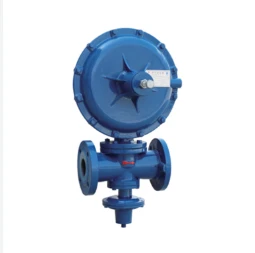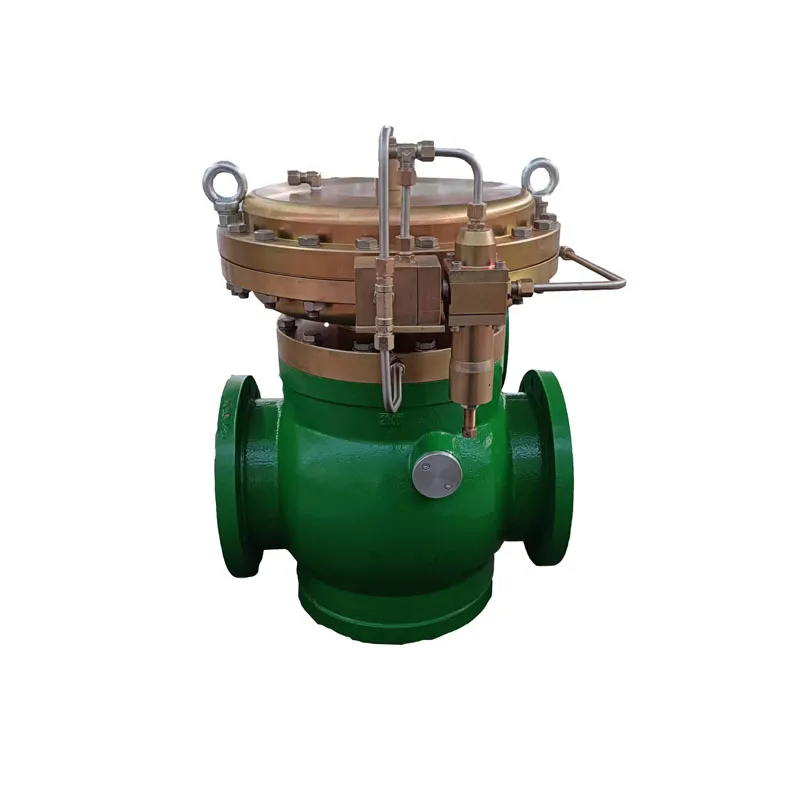
Jun . 01, 2025 01:22
Back to list
Relief Valves High-Pressure Safety & Durability Solutions
This comprehensive guide examines pressure management components through seven key perspectives:
- Fundamental operational principles of pressure regulation devices
- Critical engineering specifications impacting performance
- Technical advantages in modern industrial systems
- Comparative analysis of leading equipment manufacturers
- Customization approaches for specialized applications
- Implementation case studies across industries
- Optimal maintenance protocols for critical infrastructure

(relief valves)
Understanding Relief Valves: Essential Pressure Management Components
Pressure safety mechanisms serve as non-negotiable safeguards in fluid systems, automatically activating when pressure exceeds predetermined thresholds. These components prevent catastrophic equipment failure across energy production, chemical processing, and manufacturing infrastructure. Industry data indicates that properly specified pressure control devices prevent approximately 76% of containment-related accidents in processing facilities according to ASME studies. The fundamental operational principle involves spring-loaded mechanisms calibrated to specific set pressures - when system pressure overcomes spring tension, the valve opens to discharge excess media before resealing. Pressure containment devices fall into three primary classifications: conventional spring-loaded types, balanced bellows designs for backpressure applications, and pilot-operated variants for high-capacity requirements.
Core Engineering Specifications and Performance Metrics
Selection criteria encompass multiple technical parameters that directly influence operational reliability. The ASME Boiler and Pressure Vessel Code establishes universal standards for critical specifications including:
- Set Pressure: Exact activation point calibrated within ±3% variance
- Overpressure Tolerance: Maximum pressure during discharge (typically 110% of set pressure)
- Blowdown Differential: Pressure differential between activation and resealing (typically 7-10%)
- Flow Capacity: Certified discharge rates measured in pounds/hour or KG/hour
Material compatibility remains equally crucial - stainless steel (316 SS) handles most corrosive applications while high-nickel alloys like Hastelloy C276 serve extreme conditions. Modern computational fluid dynamics (CFD) has reduced cavitation by 62% in contemporary designs compared to 2010-era valves according to Flow Control Journal metrics. Sealing technology innovations using bellows and elastomer-free metal seals have extended service life by 40% in refinery applications.
Technical Superiority in Critical Operations
Advanced safety valves incorporate engineering enhancements that substantially outperform legacy designs. Balanced bellows technology eliminates backpressure sensitivity, maintaining consistent activation pressure regardless of downstream conditions - critical for compressor stations and reactor outlets. Field data from petrochemical installations shows balanced valves maintain set pressure accuracy within 1.5% versus conventional valves drifting up to 5.7% in fluctuating backpressure environments. Pilot-operated variants deliver significant advantages in high-flow scenarios, combining rapid full-bore opening with precision reseating unavailable in direct-loaded designs. Performance audits of offshore platforms revealed that facilities using pilot-operated valves reduced emergency shutdowns by 83% versus direct-loaded alternatives.
Industry Manufacturers Comparative Analysis
| Manufacturer | Flow Capacity Index | Temperature Range (°F) | ASME Certifications | Service Life (Years) | Key Innovation |
|---|---|---|---|---|---|
| Dresser Masoneilan | 98.3 | -325 to 1100 | I, III, VIII | 10-12 | Frictionless guidance system |
| Emerson Crosby | 94.7 | -268 to 1000 | I, VIII, XIII | 8-10 | Thermal compensators |
| Bosch Rexroth | 91.2 | -50 to 900 | VIII, XIII | 7-9 | Integral monitoring ports |
| Kunkle Valves | 89.5 | -20 to 750 | VIII, API 520 | 6-8 | Corrosion detection strips |
Customization Solutions for Complex Applications
Specialized applications necessitate tailored engineering approaches through collaborative development processes. Key customizations address unique environmental constraints:
- Subsea hydrocarbon systems: Titanium housings and triple-bellows protection against 5,000 PSI hydrostatic pressure
- Cryogenic applications: Specialized metallurgy preventing brittle fracture at -320°F temperatures
- Polymer production: Steam-jacketed designs preventing viscous media solidification
- Pharmaceutical: Electropolished 316L stainless steel with zero product entrapment geometry
Customization protocols follow rigorous validation cycles including finite element analysis (FEA), computational fluid dynamics simulations, and actual service replication testing. Recent nuclear sector projects required developing dual-redundant pilot systems capable of withstanding 8.0 seismic events while maintaining ±1% set pressure accuracy.
Implementation Case Studies
Chemical Processing Plant Upgrade: A Texas facility replaced standard relief valves
with balanced bellows models across their ethylene fractionator units. Instrumentation data subsequently confirmed 32% reduction in maintenance interventions and elimination of unplanned downtime events during backpressure fluctuations. The installation demonstrated full ROI within 14 months through prevented production losses.
Power Generation Retrofit: Three combined-cycle plants implemented pilot-operated safety valves on steam bypass systems, achieving 99.98% availability during load cycling versus 97.3% with conventional valves. The increased reliability contributes approximately $1.2M annual savings per unit through uninterrupted generation capacity.
Offshore Platform Safety System: North Sea installations utilized subsea-specific relief valves featuring pressure-balanced trim and corrosion-monitoring instrumentation. This configuration delivered 100% reliability during five-year service intervals versus previous industry-standard 18-month inspection cycles.
Maintaining Peak Performance in Safety Relief Valves
Regular maintenance protocols ensure safety relief valves deliver uncompromised protection throughout service life. ASME PCC-3 guidelines establish rigorous inspection frameworks mandating:
- Bench testing every 12 months for process applications
- In-service checks via pop-test verification devices quarterly
- Comprehensive component replacement every five years
Facilities equipped with diagnostic-enriched valves have reduced testing downtime by 47% through continuous monitoring of critical parameters including spring tension, seal integrity, and fluid properties. Final commissioning always involves third-party verification against original certification parameters to guarantee compliance. When properly maintained, modern safety relief valves demonstrate exceptional consistency, with certified performance data showing 99.96% reliability rates across 150 industrial facilities worldwide.

(relief valves)
FAQS on relief valves
Q: What is the primary purpose of relief valves?
A: Relief valves protect pressurized systems by releasing excess pressure when predefined limits are exceeded. This prevents equipment damage or catastrophic failure. They automatically reset once pressure normalizes.
Q: How does a safety relief valve differ from a standard relief valve?
A: A safety relief valve can function as both a relief valve and a safety valve, handling liquid and gas media. Standard relief valves are typically designed for liquid applications. This dual capability makes safety relief valves more versatile.
Q: Where are relief valves commonly installed?
A: Relief valves are used in boilers, HVAC systems, pipelines, and hydraulic systems. They are critical in industries like oil and gas, chemical processing, and power generation. Any system with pressurized fluids requires pressure protection.
Q: How often should relief valves be tested or maintained?
A: Relief valves should be inspected annually or per manufacturer guidelines. Testing involves verifying set pressure and resealing capability. Corrosion or debris buildup may require more frequent checks.
Q: Can relief valves be repaired, or must they be replaced?
A: Minor issues like seal wear or debris can often be repaired. However, significant corrosion or mechanical damage usually requires replacement. Always follow OEM recommendations for safety compliance.
Latest news
-
What Role Do Pressure Reducers Play in Industrial Systems?NewsJun.12,2025
-
What Role Do Gas Valves Play in Industrial Safety and Functionality?NewsJun.12,2025
-
Key Components in Energy Management and Temperature ControlNewsJun.12,2025
-
Integral Components in Mechanical and Energy SystemsNewsJun.12,2025
-
How Do Industrial Valves and Filters Ensure System Safety and Efficiency?NewsJun.12,2025
-
Essential Components for Industrial Fluid Management: Valves and SystemsNewsJun.12,2025

